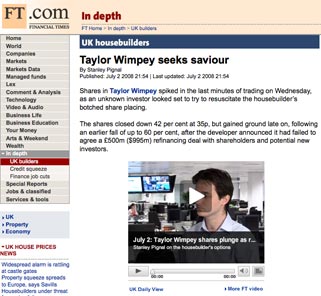Kalle Jungkvist chaired the digital round table of the World Newspaper Congress looking at growing multimedia audience and revenues. Journalism.co.uk talked to him after the session about the success of his newspapers web TV operation.
In your opening you said that Aftonbladet was a video rich site and that you are a rival to Swedish TV broadcasters, could you explain how?
In a single week we have about one million visitors just to the video service. Even that is bigger than the whole of the audience to the biggest commercial TV site TV4. We are the biggest on web TV.
Swedish public service television focuses on longer programmes for web TV but they don’t have the same reach.
Is yours just news programming?
We work with feeds from AP and Reuters, the same feed really that TV companies have for their news programmes. We use part of that, clip it down and re-edit it and so on.
The other part is that we have a lot of user videos, so when there is a big explosion or a bank is robbed, for example, it takes just two minutes to get videos from the users.
So we do a lot of campaigning for the readers to send those to us and not to the TV stations.
The third part is that we have team of our own, both programming and editing, and also reporters going out on big stories.
And they put packages together?
We don’t make news programmes, we use news clips. From 30 seconds to three minutes. We use small format programmes for the web, five minutes or so, that are based on fashion with our fashion reporter for example and they are starting to get very high numbers.
For the European Football Championships we have also started an 18 minute programme with our football experts.
Just a year ago it was just 30 seconds to a minute clips that were popular, now there is a whole menu that is increasing fast.
What do you put that success down to?
We stared in 1997 and have had a small video web team all the way through. But we really launched web video services in a big way two years ago.
One very important point is that TV company websites just take clips from their ordinary news service… we noticed that, for a video clip that we produce together with written text, when you integrate it into a news story the numbers go up.
We try to have moving pictures with big news stories as fast as possible and we are much faster than the TV guys.
As the clips get longer has that changed when viewers watch them?
In the afternoon people look at shorter clips then in the evening we have a prime time at eight. The same as TV. People are looking at more and watching longer formats here, using us in a different way. They are at home, they are more relaxed and we are really taking people from the traditional broadcast TV to us.
We are not stealing a big audience yet but we haven’t had this peak at eight o’clock before… a lot of young people don’t look at linear TV anymore.
